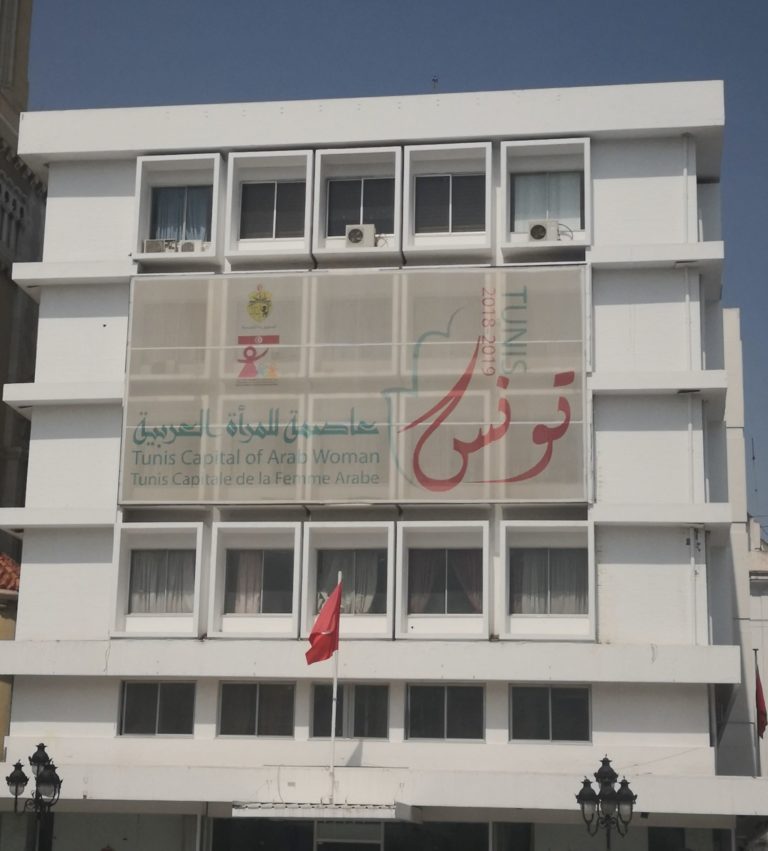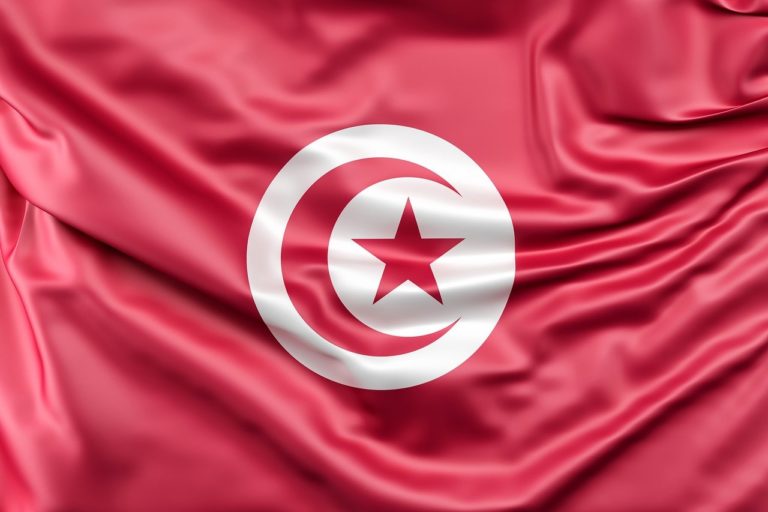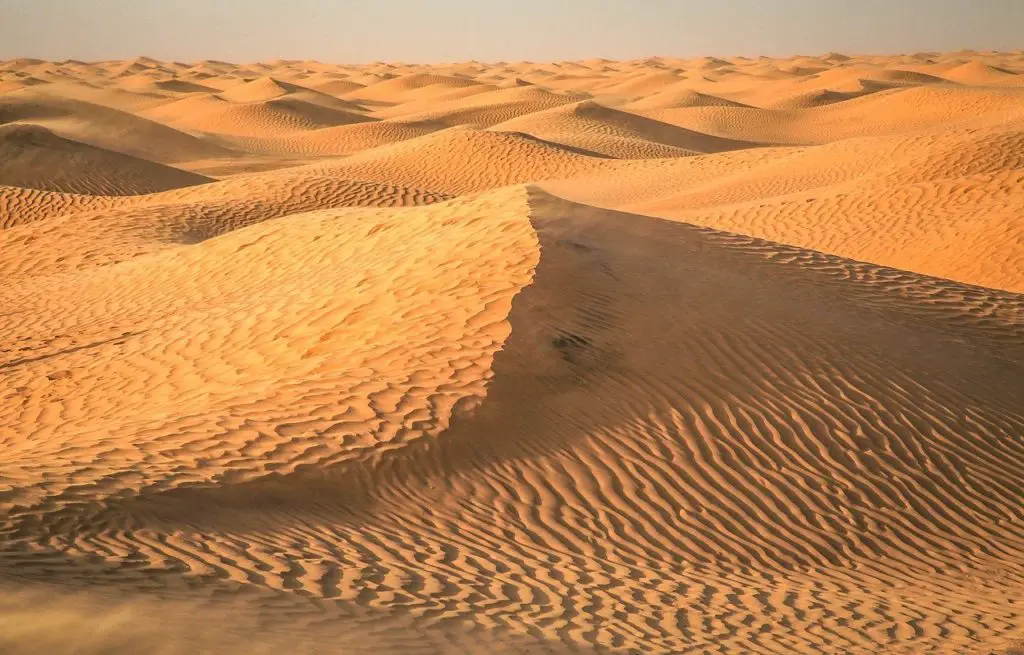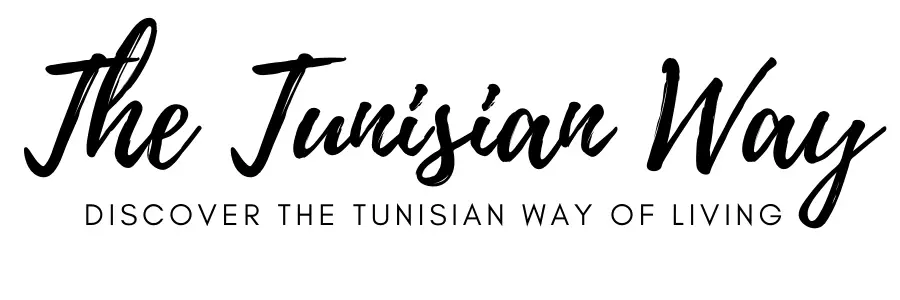Tunisia is well-known for its beautiful beaches, delicious food, never-ending coastline, sunny weather, and unique culture. But luckily it happens to be much more than “just” this. When the international traveling and holidays return to normal, maybe your next destination will be somewhere in Tunisia. In the meanwhile, let’s put the spotlight on Tunisia and discover ten interesting facts about the northernmost country in Africa. Did we succeed to tell something new for you?
1. How Islam appears in Tunisia?
Islam is a major religion in Tunisia. The 99% of inhabitants are Sunni Muslims and the rest are minorities of Christianity and Judaism. It can be easily seen how Islam makes an appearance in Tunisia. One of the most noticeable things is a call of prayer which is heard five times per day: dawn, midday, mid-afternoon, sunset, and nighttime. There are over 5000 mosques in Tunisia.
How people dress varies a lot depending on in which area you are. In the touristic areas it is common to see more western style in dressing but in the traditional areas: southern Tunisia and smaller villages more respectable way of dressing is advisable.
During Ramadan, the way of living in Tunisia is very special. Ramadan is a month of fasting and this is also one of the fifth obligations for Muslims. During the daytime when people are fasting most of the cafes and restaurants are closed. After the sunset and fasting people will gather together and eat, the cafes and restaurants will open. Nightclubs and bars are closed during Ramadan. The Ramadan ends with a feast Eid-al-Fitr. Another big feast is called as Eid-al-Adha is celebrated after a Hajj which is an annual pilgrimage to Mecca. On this feast, the Muslims slaughter an animal like a sheep, goat, or cow as a sacrifice.
2. The first Arab country which banned a polygamy
According to the Koran and Sharia, a Muslim man has a right to marry four wives at the same time and he needs to deal justly with all of them. A Muslim woman can have only one husband at the same time.
In 1956 Tunisia was the first Arab country to ban polygamy. According to Tunisian law having more than one marriage at the same time is prohibited and persons involved in polygamy will be punished. In the countries where Islam is a major religion often the polygamy is allowed according to civil law.

3. Pilgrimage to Djerba
Djerba is an island located on the east coast of Tunisia. It is one of the premier tourist destinations and is known also as a place for producing Star Wars. What’s also unique with this island is a long history with the Jewish minority.
Pilgrimage means making a journey to a place that is considered to be sacred. This is a part of many religions even though only a few people do the pilgrimage. One of the Jewish pilgrimage sites is located in Djerba. Every year Jewish people travel to visit El Ghriba synagogue also known as Djerba synagogue located in Harah Srira (meaning small village in Arabic)
Still, nowadays the North Africa’s largest Jewish community is located in Djerba. In general, the communities are getting smaller in the Arab world. The Jews have a long history with Djerba but there has been some struggle along the way. After the Jasmine Revolution, 2011 leaders of Tunisia convinced that the safety of Jews in the country will be prioritized.
4. The country of harissa people
Harissa is a Tunisian hot chili pepper paste. It is made of dried chili peppers, olive oil, garlic, salt, caraway, and coriander. The canned harissa is often made out of those ingredients but some changes are between the brands. Then there is a thing called homemade harissa and normally every house/woman has their own and right way to do it.
On your stay in Tunisia, very fast you get to know this hot chili paste as it’s served everywhere and all the time. It’s an important ingredient in many Tunisian traditional dishes, widely used in different kinds of street food, in the restaurants harissa is often served on the small plate with some olive oil and mayo (you eat it with bread), you find it inside crepes, omelets, baguettes, and some people eat it just like that directly from the can.
If you are not planning to visit Tunisia shortly then normally you can find this hot goodness from ethical grocery stores. But we have an extremely important piece of advice for you: check from the harissa package that the product has been made in Tunisia. Also, you can try to make your own homemade harissa if you feel a bit adventurous.
Now you have harissa and what you should do with it? There are multiple ways to use it: mix it in scrambled eggs, spread it in a baguette, use it to marinated meat, chicken, or fish, add it in pasta sauces, etc. And if you are interested to cook some Tunisian dishes, normally harissa is one of the ingredients.
5. Tunisian flag
The current flag of Tunisia has been established 1830’s and it has been through only minor changes during these years. This makes the Tunisian flag one of the oldest in the world. There is always great symbolism behind the flags which can tell something about countries history, culture, and religion.
The flag of Tunisia is red with a white circle, crescent, and star. The red color stands for the sacrifices made for own country, it represents the blood of the martyrs who fought for their country. The white color symbolizes peace. The five-pointed star represents the five pillars of Islam which are a foundation of being Muslim. The crescent is a traditional symbol of Islam. Previously mentioned Pan-Arab colors and symbols are widely used in Muslim countries.

6. Tunisian tagine
A tajine is a dish that is served in North African countries: Algeria, Libya, Morocco, and Tunisian. The Tunisian version of this dish is very different compared to others. It has nothing to do with slowly cooked stews and clay cooking-pot. When discovering the Tunisian tajine for the first time you might be surprised as it looks something like a thick omelet, Italian frittata, or Spanish omelet.
There is a couple of different versions of Tunisian tajine. The most familiar tajine includes normally: potatoes, onion, parsley, grated cheese/happy cow cheese, salt, pepper, and turmeric. Then according to your preference, you add chicken, tuna, minced meat, or spinach. This kind of tajine very typical everyday food in Tunisian homes and super delicious! The other tajine and more elegant version of it is called a tajine El Bey. You recognize it from three different layers made of beef, spinach, and ricotta. Often the tajine El Bey is offered on special occasions but also some restaurants are selling it. The third version is tajine malsouka/ malsou9a. It resembles a lot of the tajine but it is covered with a brick pastry (similar to filo pastry) which makes it crispy.
We recommend everybody to try those when there is a change but it is also rather easy to make at home. So now you know what to do with your leftover chicken next time.
7. The metro of Tunis
In Tunisia, you find a metro just from the capital. Everybody talks about the metro but don’t get confused as actually, it is a light rail. It means that it won’t go under the ground except some short tunnels and it looks like a tram. The first line has been opened in 1985 and the last lines 4 and 6 were opened in 2008-2009.
A ticket for the metro costs about 0,40 DT (0,10snt) and the metro generally is more simple to use than the busses. Just pay attention that you won’t miss your stop and keep an eye on your belongings. For tourists, I recommend using taxes. It is rather cheap, fast and the most pleasant way to travel when it comes to public transportation. Especially on a hot summer day.
8. Tunisian Arabic
Standard Arabic/ written Arabic and classical Arabic are an official language in 26 countries which makes it one of the most used language in the world. It is the language that is used for official purposes like media, law, and education. Also, the Quran and some old literature are written in classical Arabic. What makes Arabic one of the most difficult languages in the world? When you have decided to start studying the Arabic language first you will normally learn standard Arabic and then you know how to write, read and speak. A challenge is that no one actually speaks standard Arabic in daily life as countries have their own dialect. So you have to make a decision which dialect you want to learn.
Tunisian Arabic called also as Tunisian, Tounsi, and Derja is spoken by over 11 million people. The Tunisian dialect is part of Maghrebi Arabic and resembles the dialects in Libya and Algeria. The Tounsi is a bit similar to Maltese, it also includes a lot of loanwords from languages as French, Italian, Spanish, and Turkish. Other Maghrebi Arabic speakers understand the Tunisian dialect but for the other Arabic speaking countries, it is hard to understand. When traveling in Tunisia, French can be very helpful but knowing also a couple of Tunisian words won’t make harm.
9. Dates should be eaten in odd numbers
Tunisia is one of the world’s biggest producers and exporter of dates. Most of the date palms are growing around the areas of Kébili, Tozeur and Gabès where the climate is suitable for palms to produce delicious dates.
In the world, there are hundreds of date types which are divided into groups: soft, semi-dry and dry depending on how moist is the date. The most produced date in Tunisia is Deglet Nour “finger of light” other typical dates are Allig, Khouat Allig and Kenta. The date is a very versatile fruit. There are available plenty of products that are extracted directly from date fruits: honey, vinegar, syrup, oils, and powders. Also the date palm can be used as a building material.
The dates are very rich in minerals, nutrients, and vitamins and that makes them very beneficial for health. Maybe you have heard about a belief among Muslims, that dates should be eaten in odd numbers to gain the maximum amount of health benefits.
Tunisia is a little bit special when it comes to date farming as most of the dates are produced for export purposes. This has risen some problems as now people are focused to produce only the dates which are easy to export and are more profitable for farmers. This means that the variety of dates is decreasing. Also, there might be difficulties to find some dates from Tunisia as all have been exported.
10. Visiting Sahara in Tunisia
The Sahara is an extremely big desert located in North Africa covering parts in Algeria, Chad, Egypt, Libya, Mali, Mauritania, Morocco, Niger, Sudan, Tunisia, and Western Sahara. It is the hottest desert in the world but because of the lack of humidity the temperature drops during the nights. The average annual temperature is around 30°C but during the hottest months June- September the temperature can rise over 50°C. During the night temperature can drop low as -5 °C. The best time to visit Tunisian Sahara is between October and May when the weather is bearable. Some of the tour organizers stop operating during the hottest months.
But what kind of activities you can do in the Sahara? There are plenty of options: watch the sunrise and sunset, stargazing, drive four-wheel, dining, camping, sand surfing, riding a camel, biking or trekking. Also you can visit places like Douz, Onk Jemal, Ksour and Ksar Ghilane. The trip to the Sahara will be amazing but good preparation makes the trip more successful. Sunscreen and water are things which you should never forget especially when heading to the Sahara. Wear long-sleeved clothes and a hat. In addition if you are planning to stay overnight take warm clothes for the chilly nights. Take snacks that will boost your energy levels: nuts, seeds, dates, granola bars. And you are ready to go.

